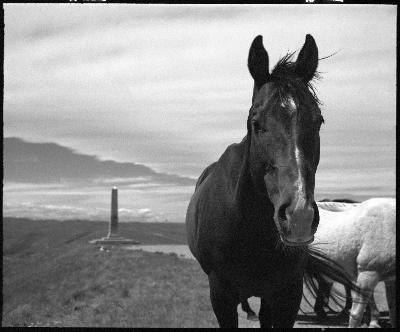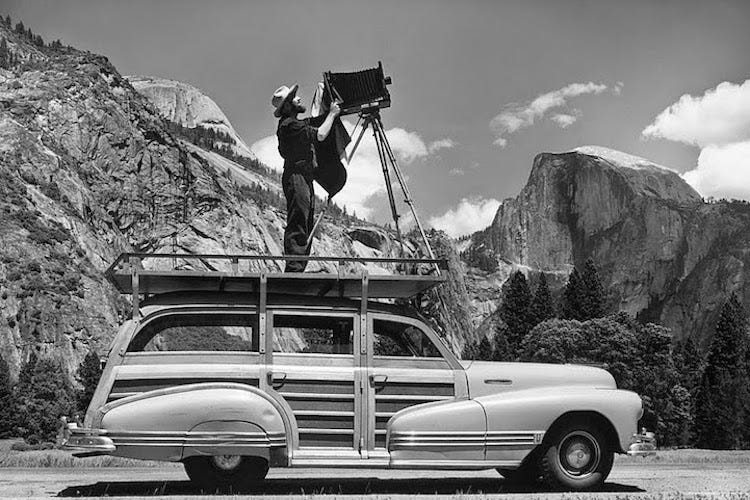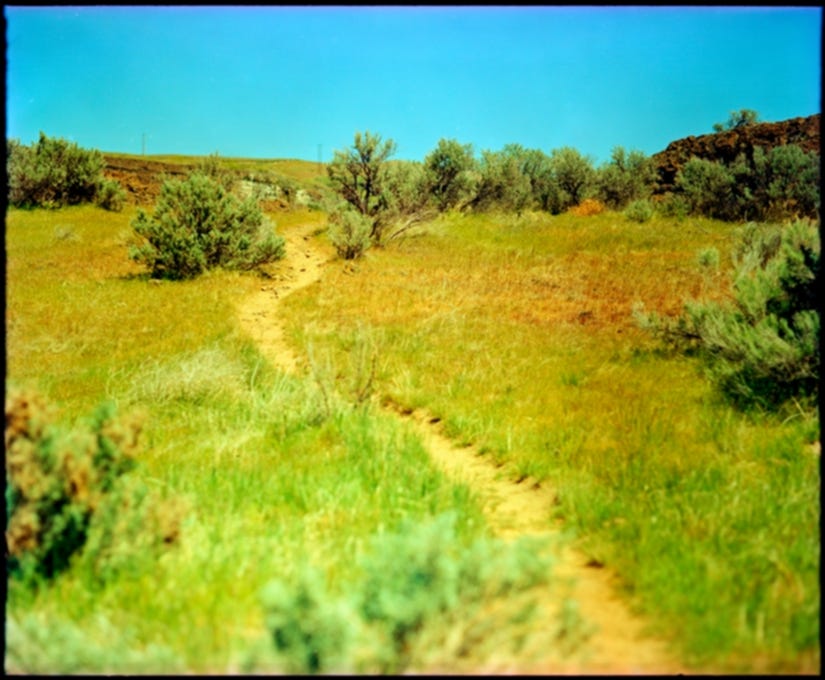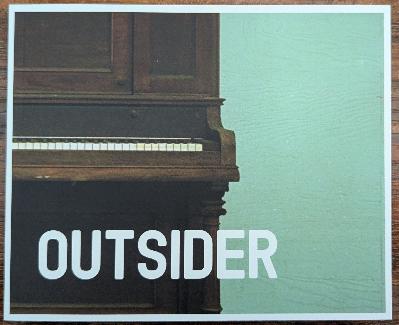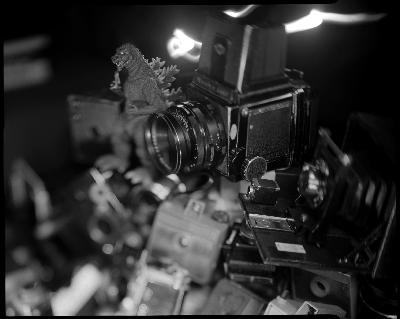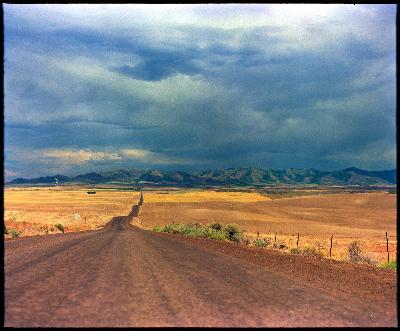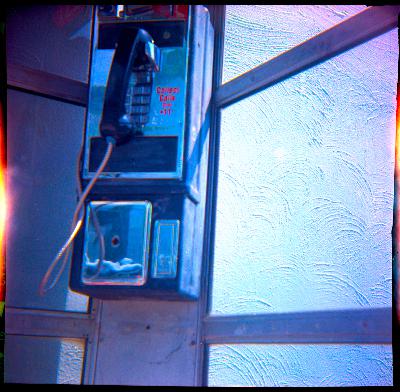We'd Be Fine Without Kodak
Description
Disclaimer: Even the mere thought of the demise of Kodak makes some folks in the film community have big feelings. I’d like to state for the record (or whatever) that I don’t think Kodak is going out of business. I’m sure they’ll be around for decades to come and will never let us down. They’ll never discontinue your favorite emulsion or raise film prices. They’ll always love us and respect us, and follow us on Instagram forever. They just had a slight financial malfunction. But, uh, everything’s perfectly all right now. We’re fine. We’re all fine here, now, thank you. How are you?
Last week (meaning the middle of August 2025) big news hit the film community and the Wall Street Journal: Kodak was going out of business! Well sort of not really. Kodak was apparently having yet another existential crisis.
Kodak released a statement attached to an earnings report detailing their lack of earnings and highlighting their nearly half a billion dollars of debt. They wrapped it all up by declaring “these conditions raise substantial doubt about the company’s ability to continue as a going concern.”
Now, this may seem like the initial rumblings that Kodak might be on its way to going out of business. But no, that’s not at ALL what they were saying, you stupid idiots, what’s wrong with you?
By “these conditions raise substantial doubt about the company’s ability to continue as a going concern,” they didn’t actually mean that there was any doubt at all about their ability to continue as a going concern. In fact, it’s the opposite, obviously. And why would you think otherwise?
To be clear, in the business world, no longer being a “going concern” doesn’t mean you’re immediately going out of business. It means that you’re probably going out of business in the near future. It’s night and day, okay? When a company is no longer a going concern, liquidation is almost inevitable, usually within a year’s time.
While Kodak told investors and board members of their financial woes, they really didn’t want the public to think of it in such harsh terms. Also, their stocks tanked by like 20%.
In classic Trump-like fashion, Kodak blamed everyone else, issuing a follow-up press release they called a “Statement Regarding Misleading Media Reports.”
When I first read this real and official press release on some random guy’s Instagram post, I thought it was a parody or hoax. It was so poorly written (let alone conceived) that I figured no multi-million dollar company with a 145-year history would ever release this in any official way.
I was wrong. Kodak is this company. Kodak and their decades of shockingly bad business decisions would absolutely release an official statement where they wander aimlessly between talking about themselves in the third person (as “Kodak”) and referring to some collective “we” while blaming “the media” for reporting that Kodak might go out of business after Kodak said “we will probably no longer be a going concern.” It’s baffling and just so dumb in so many ways that I’m tired of writing about it.
Kodak was supposed to hold a big meeting about this on Friday, August 15th, but as of the time of this recording, they haven’t issued any details about that. Maybe by the time you’re reading this, they’ve reversed all their financial woes, re-released Kodachrome, and given every film shooter $100 just because they like us so much. Who knows? The future is impossible to predict.
Anyway, now that we know for sure that Kodak will be around forever, let’s talk about life after Kodak. If Big Yellow can’t pull out of this financial tailspin, what will we, the film community, do? How will we survive without Portra and HC-110, without Tri-X and whatever they call their TMax developer?
This would be the worst-case scenario. Kodak is gone. Now what?
What Is Kodak?
First, let’s talk about what Kodak is and, more importantly, what it isn’t. Kodak is actually named the Eastman Kodak Company. It was incorporated in 1892 and did their thing until 2012 when it filed for bankruptcy. After that, it became two companies: Eastman Kodak and Kodak Alaris.
For our purposes, Eastman Kodak manufactures the film and chemicals we use. Kodak Alaris markets and sells them to us (except for motion picture film, the sales of which Eastman continues to handle).
If Eastman Kodak goes out of business, Kodak Alaris goes under too. Partially because it’s all kind of one company (sort of), but also because Alaris relies on Eastman for stock. Again, I’m narrowing everything to focus specifically on the film community. In reality, it’s a bit more complex than I’m making it. A private equity firm is now involved with Alaris, and that never ends well. So even if Eastman Kodak stays afloat, we’ll have that shitty s**t to deal with eventually.
So, because of this weird arrangement of Peter constantly robbing Paul to pay nobody, if Eastman Kodak goes under and all of the film they make is no longer being made, that will affect a whole slew of companies directly.
Your favorite photography stores, both local and online, will take a hit. Kodak film is a pretty big chunk of their business, but probably not enough to sink them. Especially the ones who have been smart enough to diversify a bit.
Companies like Cinestill, Flic Film and every other company that re-rolls and repurposes Kodak motion picture film will close. Eastman Kodak isn’t the only manufacturer of motion picture film in the world, but they’re the only ones doing color. Also, if FujiFilm is selling any color film, that will go away, too. Kodak has been making film for them for a few years now.
Other companies, like Lomography, will no longer have color film. All of Lomo’s regular color film is made by Kodak. There are other options and they have other emulsions as well as their broken cameras, so I doubt they’d fully go under, but it would be pretty rough.
Ilford, on the other hand, suddenly becomes the largest film manufacturer in the world, so good for them!
The Whole Point
Film photography sometimes seems more about buying stuff than actually creating art. So when Kodak’s latest flirtation with oblivion came to light, we had our own little meltdown during which we said things like “What will I do without Portra?” “How will I survive without Tri-X?” “I only use HC-110! I guess I’ll switch back to digital!”
Now is a good time to remember that what we create has far more to do with us than it does with the material we use to create it. It’s easy to forget that when so much of film photography is collecting gear and stocking up the film fridge, but it’s true.
Of course, most of what Kodak produces can be swapped out with something else. Do you like Tri-X? You’ll be fine with Ilford HP5. Do you develop with HC-110? There’s Legacy L-110. Adore the colors of Portra or Ektachrome? Well, okay, admittedly, we’ve got a problem there. But with Ilford dipping their toes into the color pool, and with them suddenly being the largest film manufacturer in the world, it’s likely they’d jump in to fill that gap.
But even that isn’t the point. The point is that we will survive the loss of our go-to emulsions should Kodak go the way of the dinosaurs. My favorite emulsion is Vericolor III. It was discontinued by Kodak in 1994. I’m doing fine. We are artists and creators, our damn job is to overcome obstacles to realize our vision, our dreams. Film is a big part of what we do, but it’s not the reason we do it. Film is not why we are artists or even photographers.
We Are Small
Kodak has served photographers since before photography became a thing that everyone was doing. At its height (and for a couple of generations before), every household in America and Europe had at least one camera, and that camera needed film. The film community as we know it now didn’t really exist then – it didn’t need to.
Once digital became a thing, we eventually figured out that we missed film. We missed the look, the process, the ritual. A bunch of us came back. That number, however, is an incredibly minuscule fraction of the number of film shooters in the 1980s, when film was at its apex. In comparison to that, we hardly exist. If you talk to any normal person on the street, even those folks old enough to remember buying film at the drug store, nine times out of ten, they will have no idea that people are still shooting film, that film is still being produced, or that labs still exist.
We are living and creating in a bubble and need to realize that. Our community is smaller than many hobbies, and yet we still expect a huge company like Kodak to somehow survive on what we can collectively spend.
It’s true that during its 2012 bankruptcy, Kodak could have downsized to a smaller company to better meet the needs of its film customers, but it didn’t. On one hand, it’s understandable, in 2012, the Holga explosion was happening, but that really seemed like a fad that would fizzle out in a year or so. On the other hand, instead of downsizing, Kodak expanded into several divisions, apparently to make shitty business decisions more efficiently across various sectors.
What I’m trying to say is that we are small in number and tight in community. It makes no sense at all that a company the size of Kodak would be good at serving our needs.
Kodak Doesn’t Care
And what I’m really trying to say here is something that many of you might balk at: Kodak doesn’t really care much about us. Okay, sure, there’s Tim Ryugo, but he’s one guy and not the company. When it comes to film, their main customer is Hollywood.
They know that people still shoot film, of course, that’s why they still make it. It is still profitable (or whatever) for them to do so. Bu




